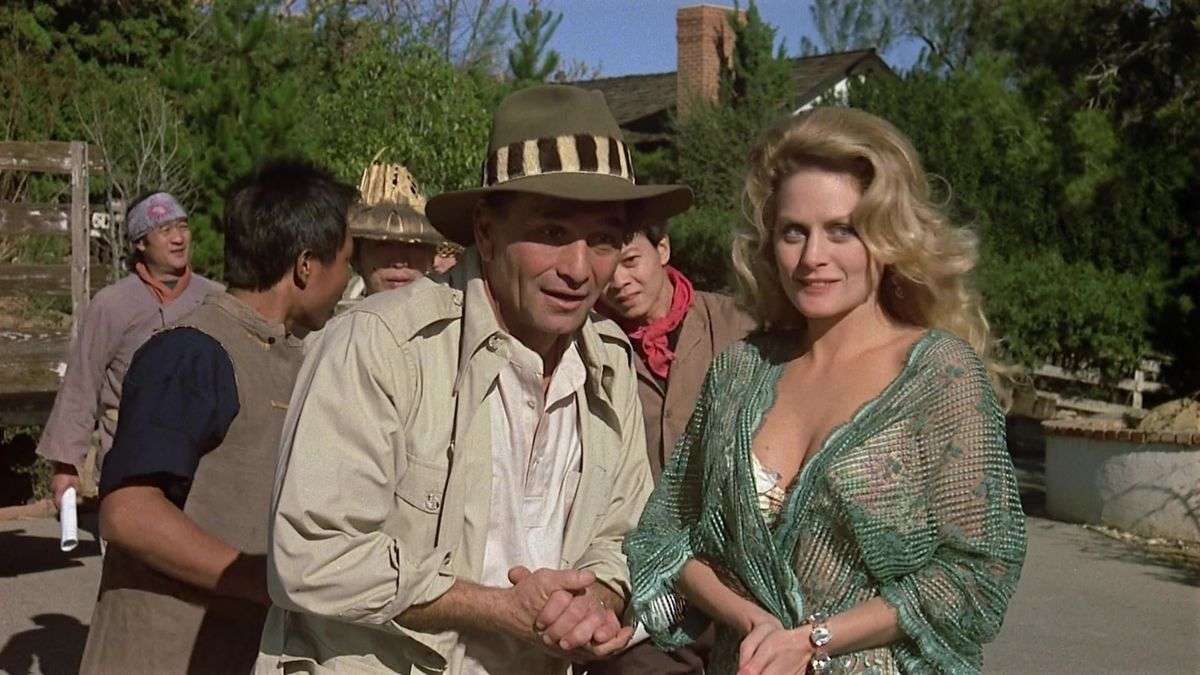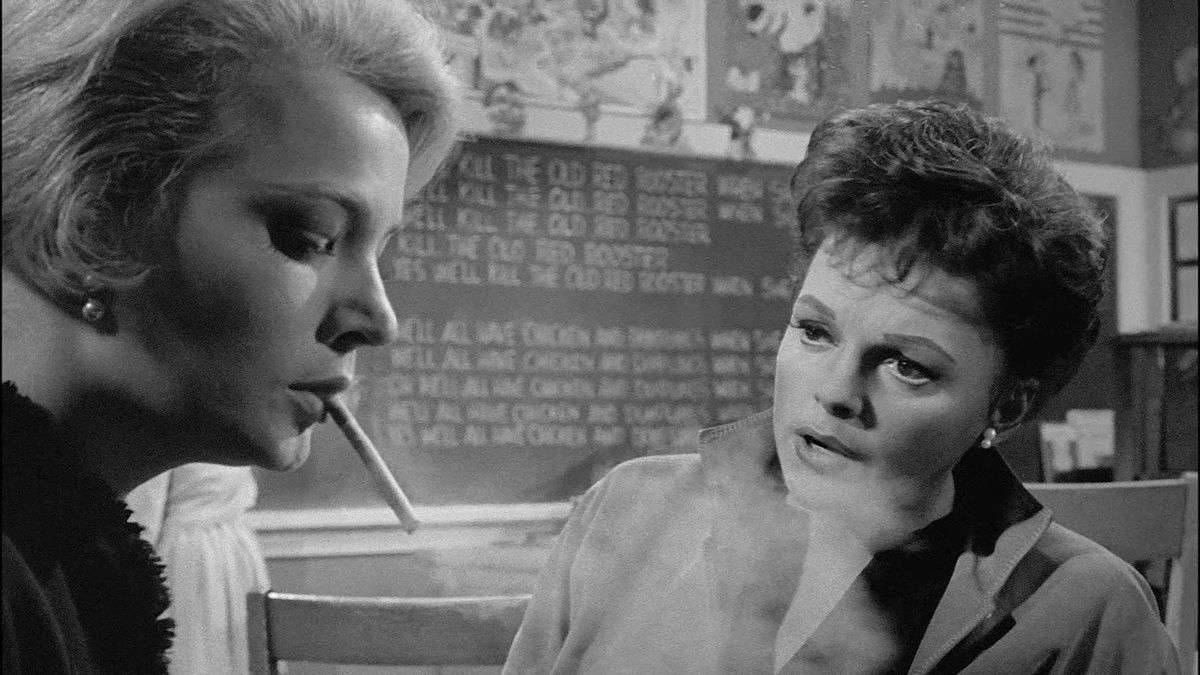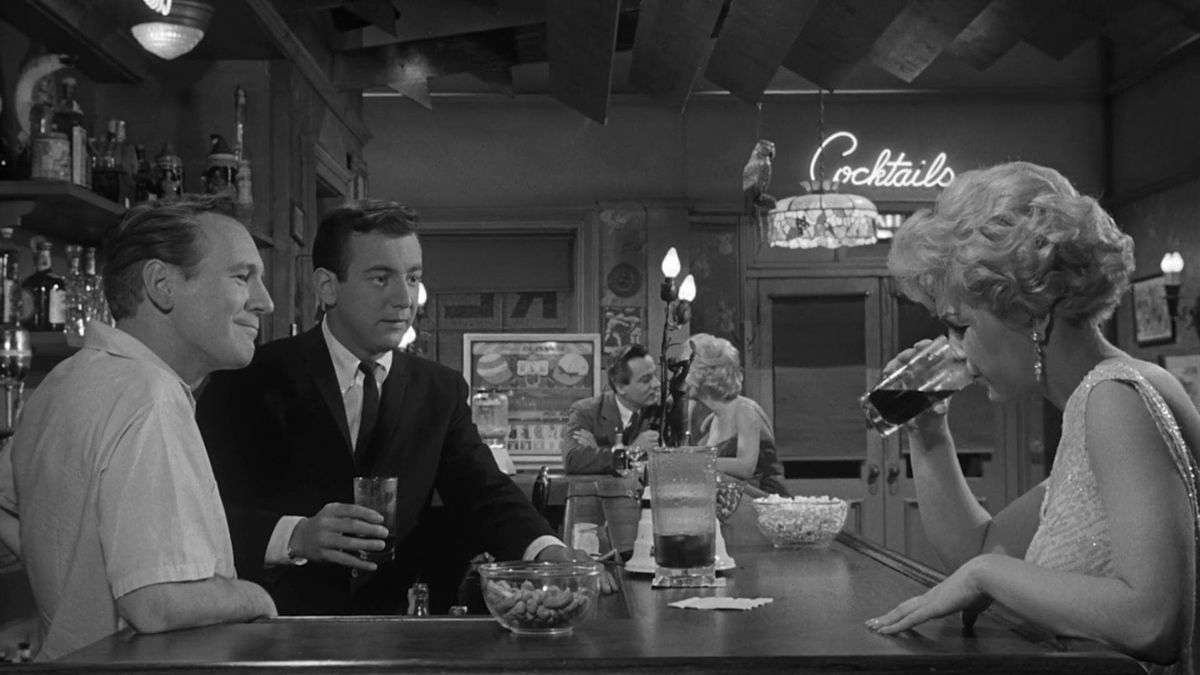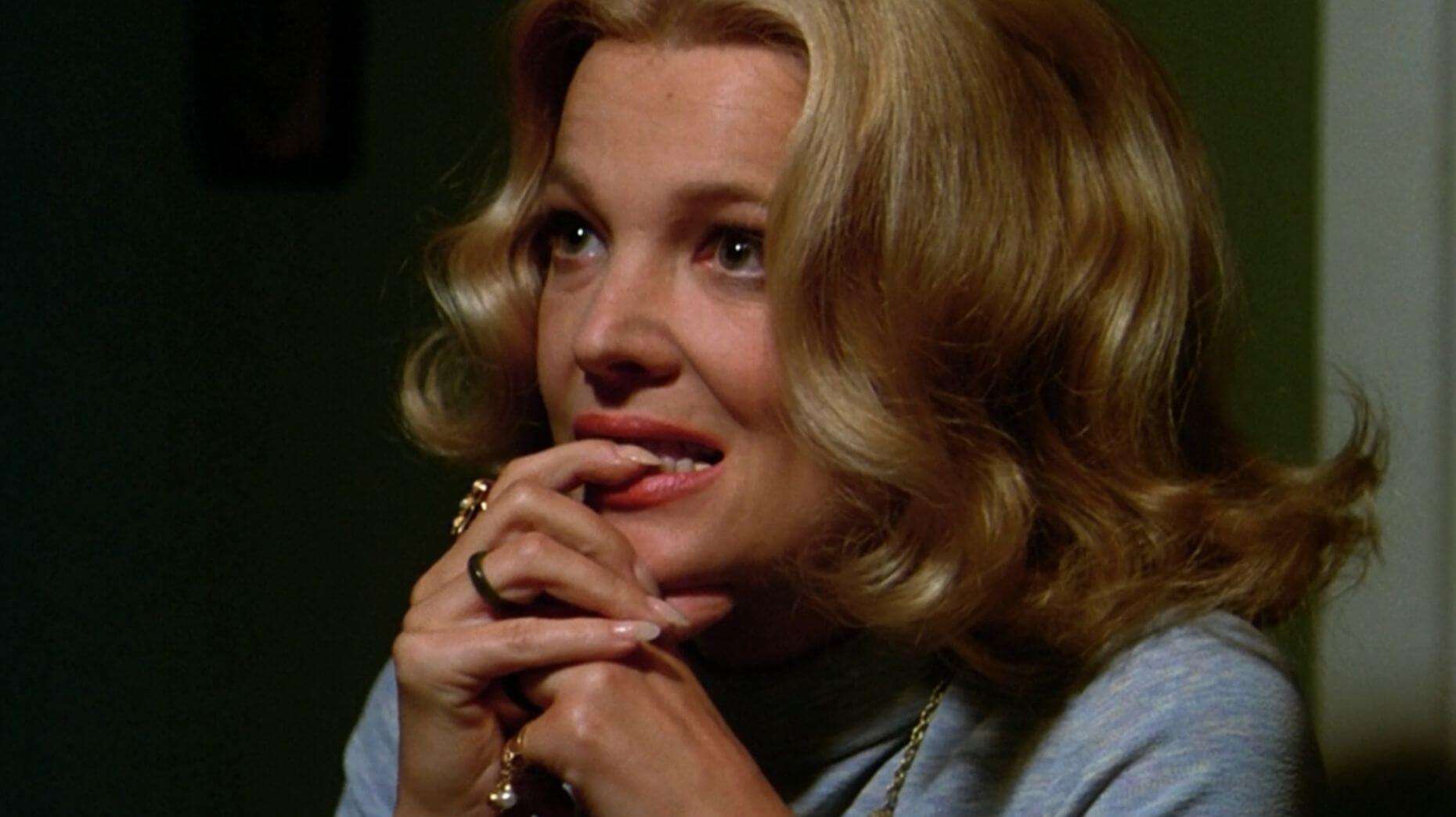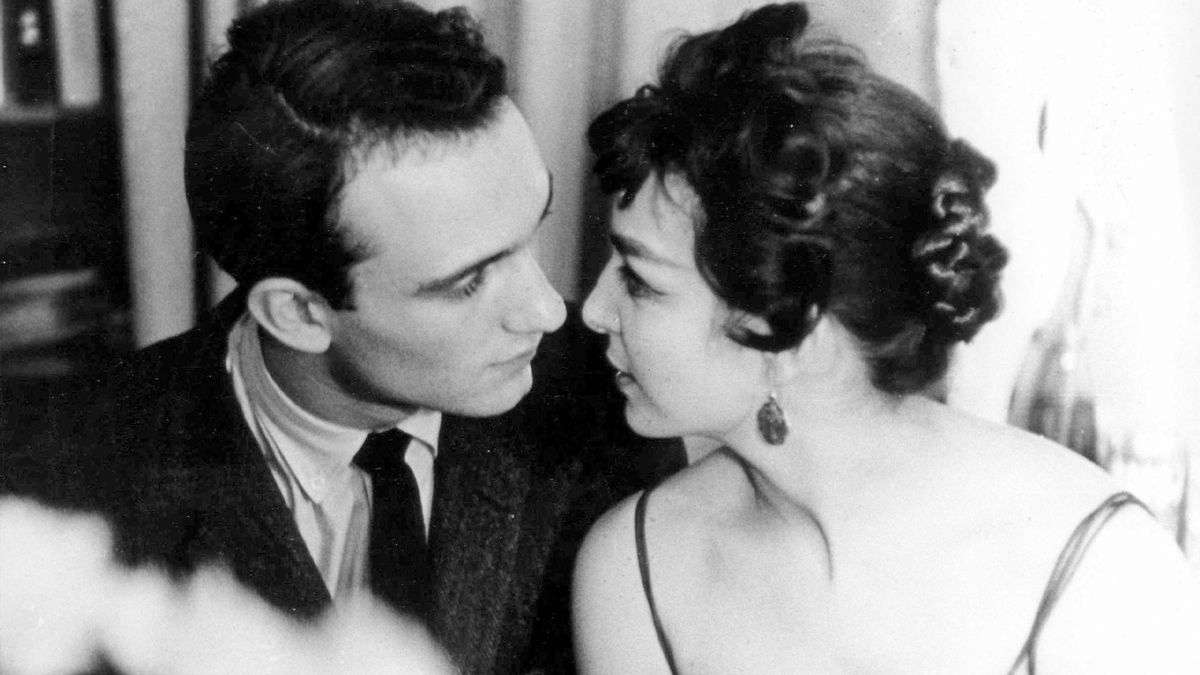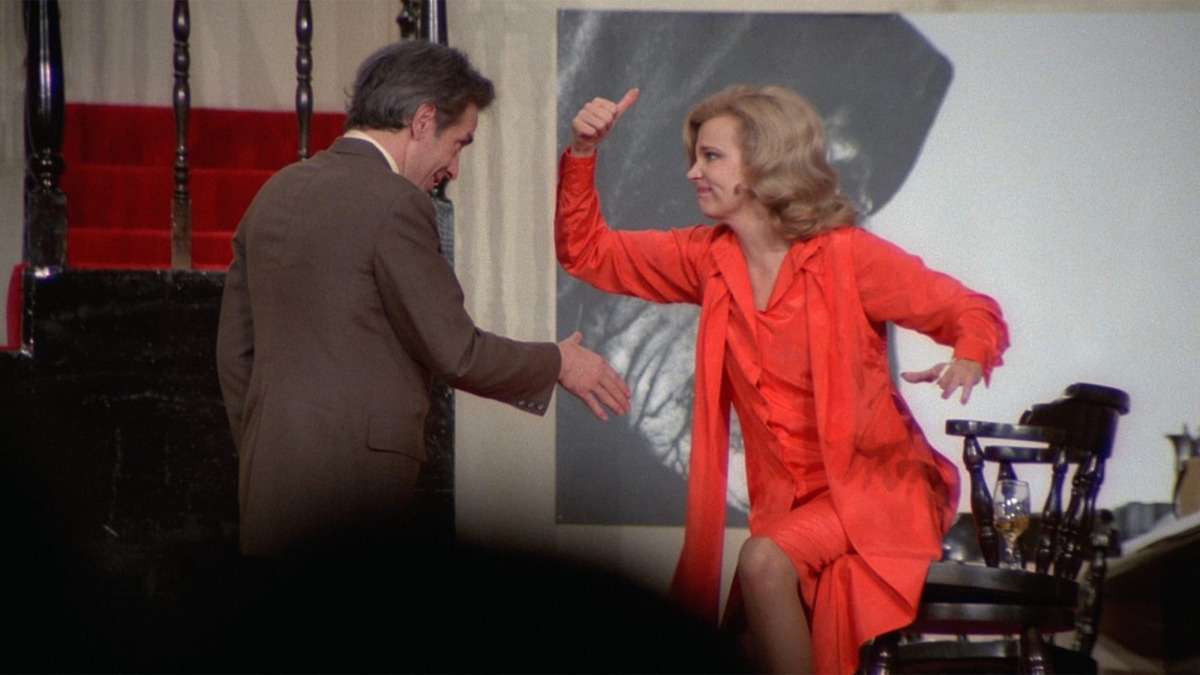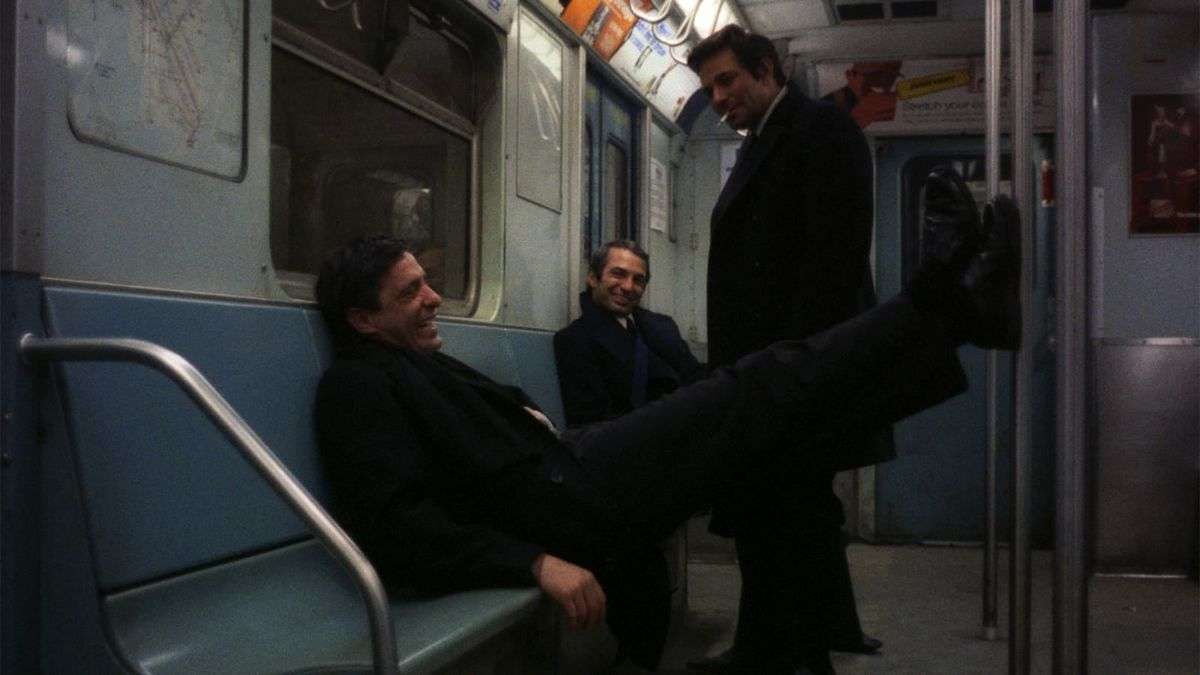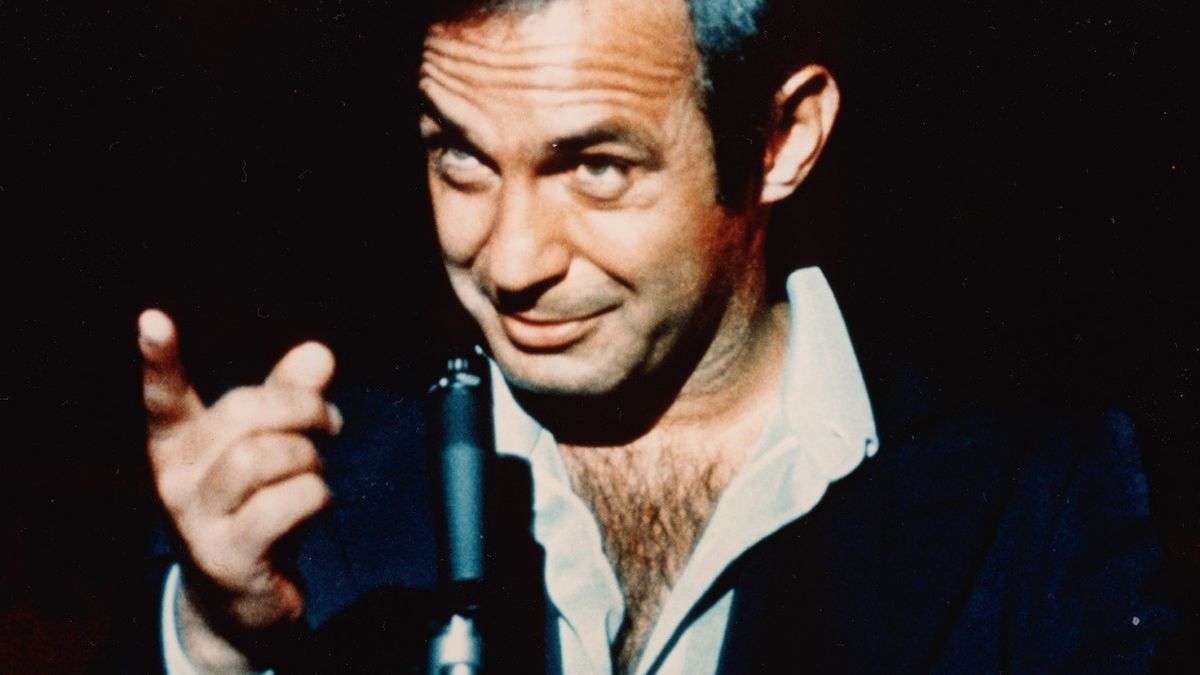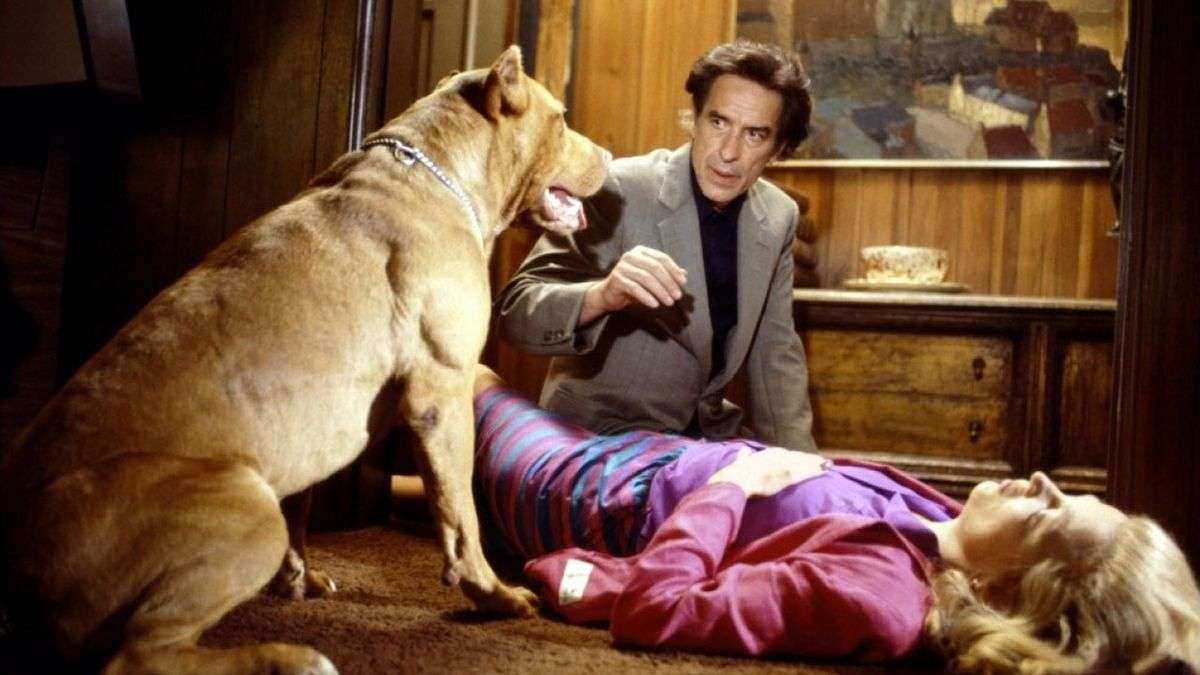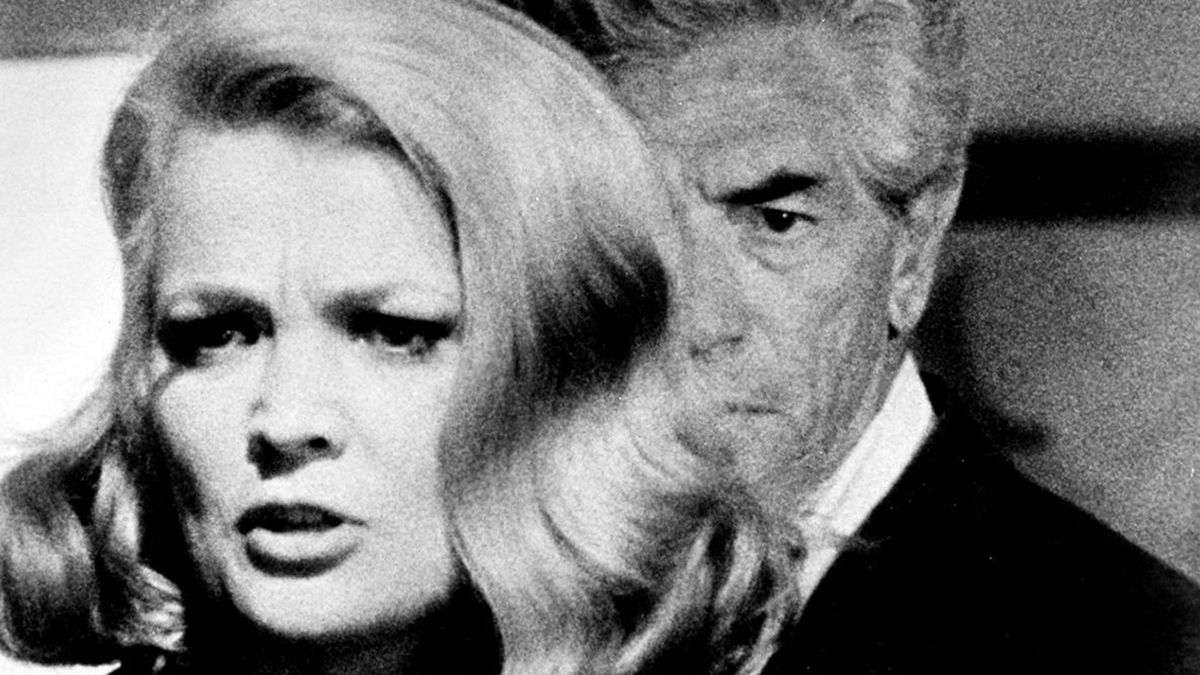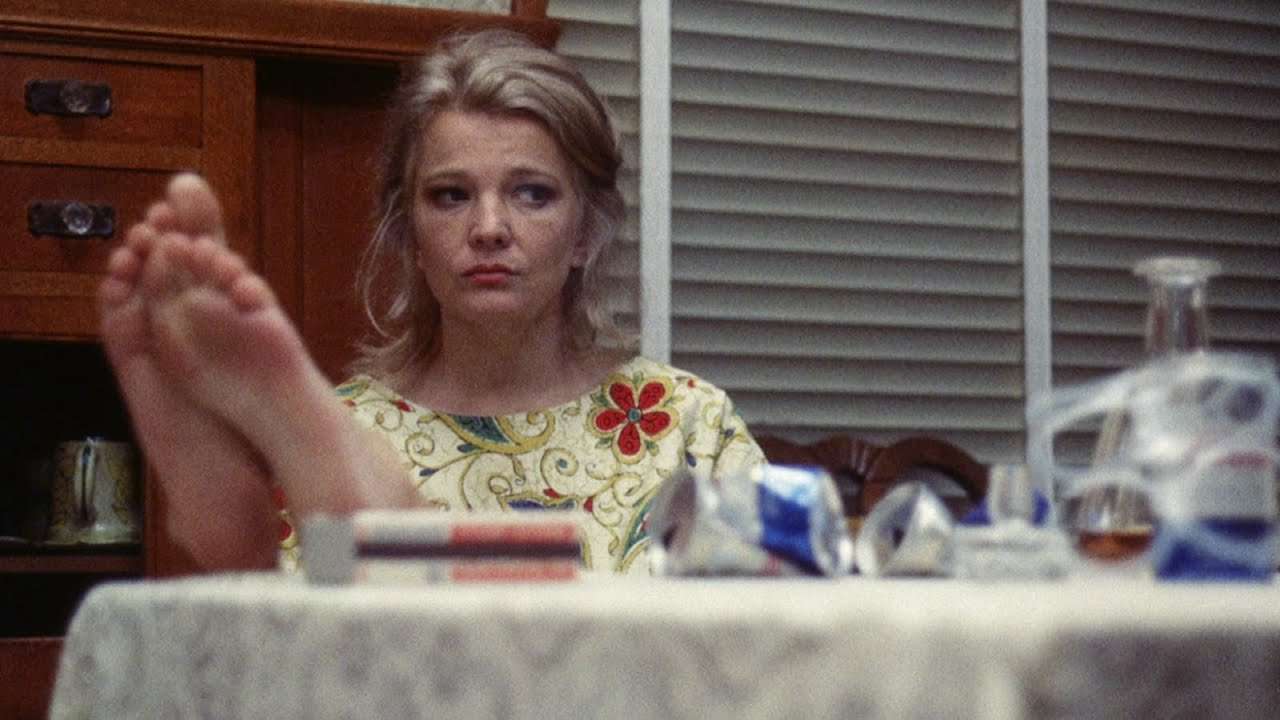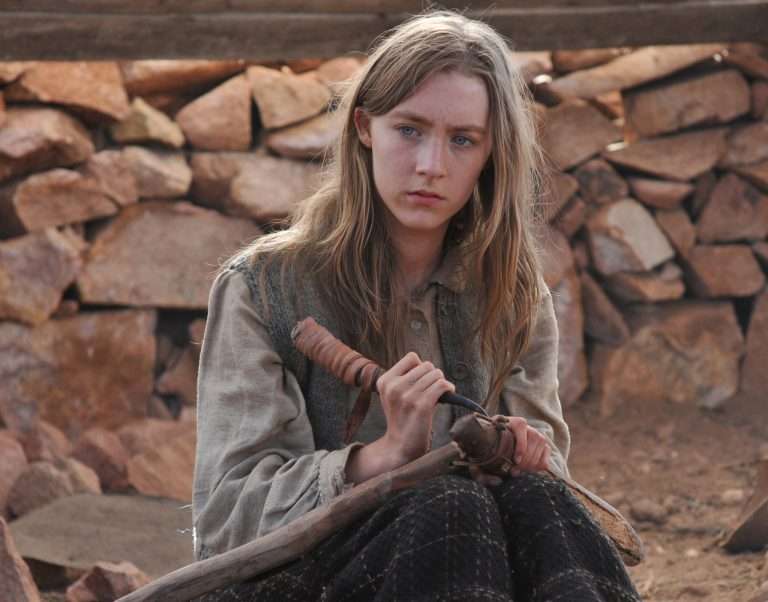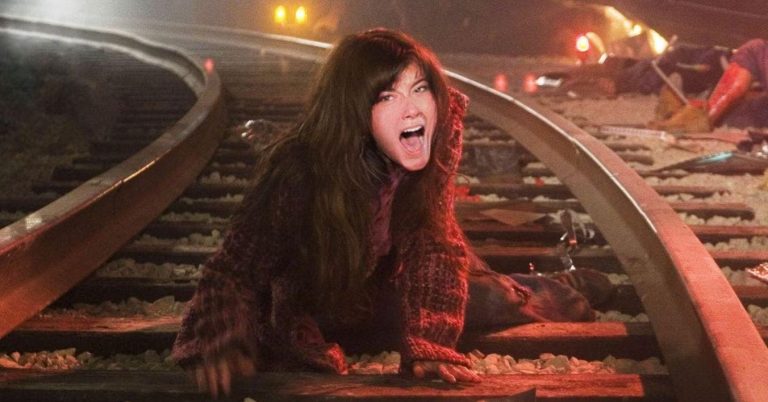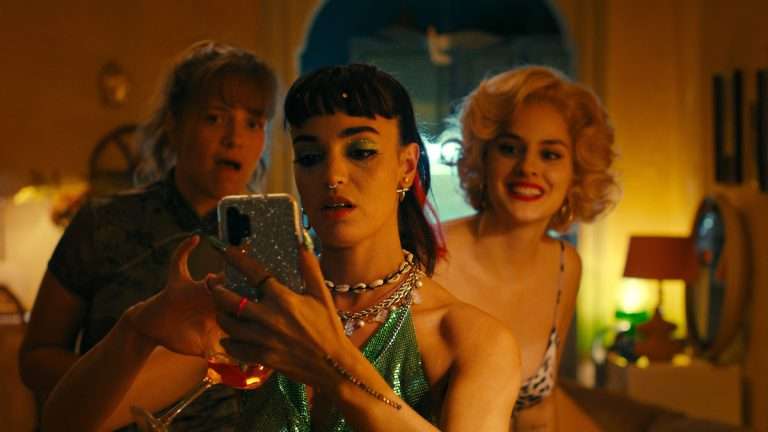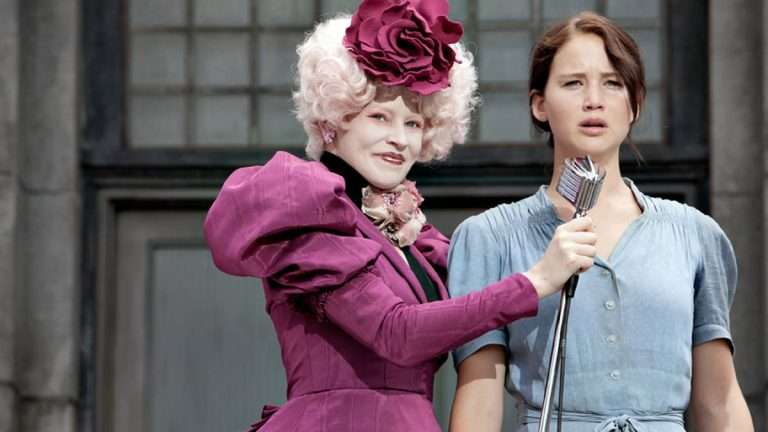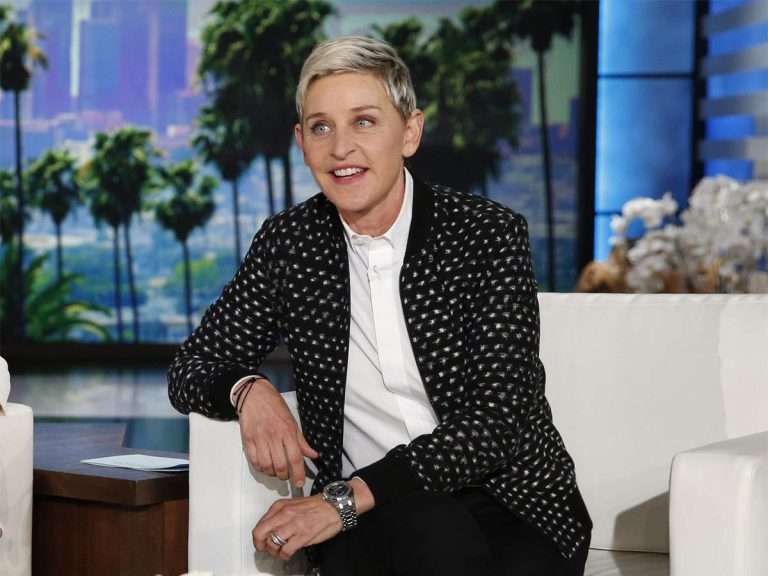In the broadest terms possible, you can divide the history of American cinema into two periods: before and after John Cassavetes. The actor-turned-director revolutionized the form and content of post-war film with his highly personal, character-driven dramas shot on a shoestring budget and assembled in his own home. For decades, and especially after he shunned the studio system altogether in the late ‘60s, he developed his own cottage industry, which has served as an empowering example to countless filmmakers ever since. However, nobody in the legion of imitators has come close to replicating Cassavetes’s incisive read of the human experience, particularly how those around us condition our behavior. His heady mix of handheld camera, intense performances, and largely improvised dialogue reached such a universal poignancy that he was equally adept at telling stories at either side of the class divide, sometimes simultaneously.
Equally, to describe this man’s oeuvre simply in terms of his individual genius is to undermine the collaborative spirit that burnishes his best work. There was Gena Rowlands, one of the 20th century’s greatest actresses who was also Cassavetes’s wife and muse. Then there’s Ben Gazzara, Peter Falk, and Seymour Cassel, beloved character actors and personal friends of the director who all feel at ease in the company of his camera, cracking wise with an earnest vulnerability. More underrated is the contributions of Bo Harwood, writer of lowkey guitar music and composer of many of the masterpieces that make up this list.
This article will rank all 12 films Cassavetes is credited as director on, meaning some more unfortunate forays into his middling studio films at the start and end of his career. As tragic as Cassavetes’ too-soon death at 59 was that his last film was the forgettable broad comedy “Big Trouble.” Nevertheless, he’s been remembered and commemorated in the decades since his passing for his independent body of work, a courageously singular model of filmmaking that continues to inspire and evoke.
12. Big Trouble (1986)
The aforementioned black sheep, which lies at the end of Cassavetes’s glittering career, “Big Trouble,” shows early promise as a comedy of manners before petering out rather quickly. It was a for-hire job based on a script that riffs on the classic film noir “Double Indemnity.” Considering Cassavetes’ background in noir as the star of the fondly remembered TV show “Johnny Staccato” (1959-60), there was surely potential for a shrewder subversion of the genre’s tropes or a subtler form of homage. Perhaps he could have used the same stark black-and-white cinematography that he used on “Shadows” and “Faces.” Well, it’s hard to say exactly what happened, but seeing such a visionary be so restrained is odd.
The cast offers some refuge from mediocrity, at least. Peter Falk provides a sense of continuity with the larger Cassavetes catalog, whilst Alan Arkin and Charles Durning perform their roles with typical aplomb. The comedy works best in its broadest moments, which makes it seem a poor choice for Cassavetes. This was a man who specialized in loud emotions at times, but the true pathos in his earlier films was always found in the subtlest of gestures, the tightest of close-ups. Such insights are entirely lacking in this formally regular and dramatically underwhelming effort.
11. A Child Is Waiting (1963)
In the B.C. (before Cassavetes) age, Stanley Kramer was perhaps the most prominent voice in American independent cinema. He worked with the biggest stars and shot in the glossiest locations, but he was a singular voice who produced and directed his own work about meaningful social issues of the time. In that sense, his hiring of Cassavetes to direct the 1963 film “A Child Is Waiting” appears suitable star-crossed before you remember that Kramer’s modus operandi was to reduce troubling social issues into the most anodyne Oscar-bait imaginable.
The film still has moments of interest for Cassavetes completists. Seeing him work with bona fide screen icons Burt Lancaster and Judy Garland is fascinating, and you can see his inimitable connection with actors shine through the child parts. Your heart does ache for the kids holed up in a mental asylum under the iron fist of Lancaster’s Dr. Clark and root earnestly for Garland’s alternative methods, but at some points, it feels pandering and obvious. Something this didactic and emotionally unambiguous is not subject matter Cassavetes would tackle in his independent work, and for good reason. It’s easy to say this in hindsight, but you can feel Kramer’s influence strongly here, and it doesn’t mesh quite well enough with the director’s sensibilities to create a satisfactory end product.
10. Too Late Blues (1961)
Enough of the negativity, as we now switch to a far more dynamic example of Cassavetes’ flirtations with the studio system. Fresh from the successes of “Shadows” (his independent first film, 1959) and “Johnny Staccato,” he brings jazz, noir, and a freewheeling spirit to this star vehicle for singer Bobby Darin. Perhaps as a deliberate tease, Darin doesn’t sing in this one. Instead, he’s a jazz musician nicknamed “Ghost.” Considering Cassavetes penned the screenplay, it’s easy to read the character as self-reflective: here’s a talented artist suffering commercially because he refuses to compromise his artistic principles. There’s a wink and a nod to the audience and the producers in that, and it is to the director’s credit the film is engaging enough dramatically never to be smugly self-aware.
In the performance scenes, Darin and his love interest, a singer named Jess (Stella Stevens), the kinetic cinematography used in his indie work, gets an early outing. Individually, both performers are strong, but you wish they could complement each other romantically rather than just behave as ciphers for the different ways we create art and live our lives. Nonetheless, unlike in “Big Trouble” and “A Child Is Waiting,” the skills honed in Cassavetes’ other films aren’t entirely wasted here. It’s definitely worth a watch for the die-hards and the jazzheads.
9. Gloria (1980)

From 1968-1984, Cassavetes was at his peak, and all but one of the subsequent films on this ranking will come from this period. At that time, he was in a groove, and he could take studio money for distribution when he wanted (such as here) but was more than happy to operate entirely within the confines of his friends, his home, and his unique worldview. The result was a string of films on par with Godard in the ‘60s or his contemporary Robert Altman in the ‘70s for consistency and influence with each passing movie. All that is to say that “Gloria” is simply the least great of an excellent bunch.
It was undoubtedly the most conventional film he’d made in over a decade, a crime drama starring Gena Rowlands as a neighbor who becomes the guardian of an orphaned child. She’s on the run in the most literal way imaginable, flitting from location to location with the mob always on her tail, often without explanation. This entry gives me the first opportunity to talk about the great Ms. Rowlands, one of our time’s most singular and affecting actresses. Here, she takes a role with limited dramatic potential and wrings out a moving performance where the responsibility of late-in-life quasi-motherhood weighs on her every move. After you’ve ventured through the heavier journeys of Cassavetes’ ‘70s work, “Gloria” is a nice breather and a terrific melding of genre sensibilities with the director’s touch.
8. Minnie and Moskowitz (1971)
Another studio film! But this time, it seems the studio gave Cassavetes carte blanche – it’s hard to imagine any executive picking the world-weary, unkempt Seymour Moskowitz (Seymour Cassel) as a leading man. It would be a stroke of genius if they had, though, as his uneasy charm forms the bedrock of an enduringly off-kilter romance with Minnie Moore (Rowlands). Its films like “Minnie and Moskowitz” remind you why the New Hollywood movement was so successful; the camerawork and on-location shooting combined with a new brand of authentic character actors provided an unrivaled texture and warmth to the films regardless of genre.
This movie, especially, is an earnest celebration of love in all its shapes and sizes that is complemented by the specific place and time it’s set in. In Cassavetes’ works, we often face lonely, alienated souls without an outlet for their emotional capacity, so it’s very satisfying and heart-warming to see two such souls find each other. Rowlands and Cassel are one another’s perfect foils. They both embody that specific Cassavetes sense of yearning in their own way from different sides of the divide in a way that pre-empts the magic of “Love Streams” over a decade later. For many filmmakers, this would be the enduring masterpiece of their filmography; for Mr. Cassavetes, it barely cracks the top 10.
7. Shadows (1959)
This is the film that re-introduced Cassavetes to the world as a once-in-a-generation visionary. It boggles the mind that “Shadows,” his debut film, was made in 1959. A year before Jean-Luc Godard broke the mold with “Breathless,” almost a decade before “Bonnie and Clyde” welcomed in the new generation of Hollywood, Cassavetes saw the future. This is a frenetic and thoughtful treatise on race relations in a time when the Beatnik counter-culture stood at the crossroads of these issues.
Ben, Hugh, and Leila are siblings in Manhattan. All are black, but Hugh is notably darker in complexion, whereas Leila is (in modern parlance) “passing.” This tension informs the interplay between the siblings and beyond. The characters’ names are taken from the actors in a move that heightens the realism and spurs the easygoing, improvised style of the picture. Once again, jazz is a source of fascination for Cassavetes, but not just as a plot device. Shadows’s action is backed by a brilliant score from jazz legend Charles Mingus, propelling the action forward with joie de vivre that can change on the whim of a sudden discordant note.
At a terse 87 minutes, “Shadows” was subject to countless re-edits before the director felt comfortable releasing it. In its current form, it is Cassavetes shortest film and, in some ways, his most rudimentary, but with a contagious excitement all its own and capital-P political insights he wouldn’t approach again with such frankness. It’s a revelatory and thoroughly enjoyable watch to this day.
Related to John Cassavetes Movies: 20 Great Films from the Golden Age of Hollywood
6. Opening Night (1977)
“Opening Night” feels as much Rowlands’ film as it does Cassavetes’s, a testament to their enduring romantic passions and joint preoccupations as creatives. As with many Rowlands’ characters, Myrtle Gordon is a woman on the edge. Unlike some of her other creations, though, she is, on the surface, extremely successful, anticipating the opening night of a new play. Yet fame seems just a more circuitous journey to misery and confusion as a combination of obsessive relationships, artistic commitment, and perpetual alienation causes her to fracture.
This is truly one of Gena’s most remarkable performances and among the most memorable in all of ‘70s cinema. She simultaneously perfects Myrtle Gordon and the lead in the fictional play “The Second Woman.” Cassavetes is unafraid to allow long rehearsal scenes from the production to play out in real time, and the camera’s gaze is acutely aware of the subtle difference between Rowlands’ two performances. How much does one carry over from their life into their art? Cassavetes’s work ethic and modes of production would suggest very much so, and “Opening Night” is another insightful interrogation of how much the human spirit can endure whilst also being one of his most instantly pleasurable and accessible movies.
5. Husbands (1970)
With Rowlands, Cassavetes explored unique facets of feminine trauma with an honesty decades ahead of its time. However, he also made one of the most enduring and evocative movies about manhood ever made. “Husbands” follows three spouses who seek a new life of freedom after the death of their friend. Whilst it would be crude to label Cassavetes a gender essentialist, he observes the differences between men and women better than any other director. He shows us that the expectations of manhood and femininity are imposed both by wider structures and our own internal biases. Despite being set free from marriage and fatherhood, the characters end up empty and searching for yet more ways to feel comfortable with their self-identification.
The ending is a somewhat conservative ode to fatherhood as Cassavetes’ character looks at his child and realizes his place in the world. It’s the epitome of bittersweet, a heart-warming coda thrown through the Cassavetes machine of human imperfection and almost unbearable levels of emotional honesty. Some of the scenes between the men themselves are very hard to watch. Their political incorrectness reveals to the viewer the ugly undertones of the social moment, a time and place that is essential to “Husbands,” as it explores the cityscape more than any other Cassavetes movie.
4. The Killing of a Chinese Bookie (1976)
Cassavetes takes a straightforward crime drama and burnishes it with his indelible insights. Ben Gazzara is Cosmo Vitelli, a man of principle and immense feeling who just so happens to channel this into the operation of a sleazy L.A. strip joint. He joins a series of late-era Cassavetes protagonists whom the pre-eminent Cassavetes scholar Ray Carney has described as visionary loners, with “Chinese Bookie” being a “one-man show” led by an “invisible man.” Gazzara went one step further in an interview years after the fact, drawing a direct autobiographical connection between Cosmo’s restless pursuit of artistic truth and Cassavetes’ very own. It is an interesting read, but perhaps one that underplays the unique characterizations at play here and the ways in which Cosmo is a product and a feature of his environment.
When Cosmo is in debt to the mobster Mort (Seymour Cassel, excellent as always), he must carry out the titular homicide, carrying him into the criminal underbelly that always lurks beneath his ostensibly legal establishment. The push-and-pull between morality and subsistence is backed by some of Cassavetes’ most striking images in the neon-soaked clubs. Discussion of this film should also note that it exists in two different versions, with Cassavetes cutting almost half an hour of footage for a leaner re-release in 1978. It’s an impressive feat of editing, serving to emphasize the interior world of the protagonist. Still, for my money, the 1976 cut is more successful in placing Cosmo in a specific time, place, and environment. Both are worthwhile and fascinating new ways to watch a certified classic.
3. Love Streams (1984)
“Love Streams” seems like the best opportunity to discuss Cassavetes, the actor. He adheres to the same highly emotive, off-the-cuff style as his wife, Gena Rowlands, but to very different ends thanks to his natural wit and movie star charm. This film, the last true Cassavetes picture, is the perfect showcase for this contrast. Rather than lovers, Cassavetes and Rowlands are cast as siblings, recipients of unconditional affection from one another that offers refuge from troubled personal lives. While “Love Streams” may be more formally conventional than films earlier on this list (with no handheld camera in sight), it’s nevertheless a quintessential film in his oeuvre and home to his greatest individual performance.
Cassavetes’ Robert is a playboy playwright who refrains from traditional notions of love even in relations with his estranged son. He takes the youngster to Vegas, spends the night on the town without him, and berates him with lectures about the fundamental differences between men and women. Rowlands’ Sarah, meanwhile, is accused of loving too much, being helplessly devoted to her husband and daughter even after their separation. Cassavetes patiently waits about an hour to have the two reunite, a scene of searing emotion in a film unafraid to pull on the heartstrings. The two continue to struggle to find outlets for their feelings until the most enigmatic and beautiful final scene of Cassavetes’ entire career. More than any other, this director understands that human relationships cannot be surmised in two hours; their complexities are too labyrinthine for a three-part structure.
2. Faces (1968)
Earlier, when I mentioned that Cassavetes’ career bisects the history of independent American film, what I really meant was “Faces.” Whilst “Shadows” was influential, it was perhaps seen as a one-off in light of Cassavetes’ sterile studio follow-ups. But “Faces” proved he was the real deal, a monumental figure in the history of post-war cinema. In an era where the studio system was evolving in order to maintain its grip, “Faces” grabbed three Oscar nominations and a prize from Venice with a cast of mostly unknown performers and a rambling, plotless structure that emphasized character and feeling above traditional notions of storytelling.
John Marley and Lynn Carlin are Richard and Maria, a successful married couple who spend nights pursuing their youthful vices after hastily agreeing to separate. Richard finds himself in the company of his friend Freddie (marvelously acted by Fred Draper, Cassavetes’ former roommate), who is in a perpetual state of arrested development and insecurity with regard to his younger girlfriend Jeannie (Rowlands). They enjoy these empty thrills from afar with the exception of a gloriously raucous opening scene; watching drunk people sing, dance, and fall over has never been so compelling.
If Maria doesn’t get as much screen time, Carlin more than makes up for it with her Oscar-nominated performance. She pairs brilliantly with fellow nominee Seymour Cassel, who, in his younger incarnation, is a heady cocktail of charm and intensity. As Cassavetes (who did indeed edit his own movies) cross-cuts between the scenes, everything feels deliberate and exacting without ever detracting from the core humanity of the performances. An enduring landmark of modernist cinema, “Faces” will have you on the edge of your seat watching people drink and argue.
1. A Woman Under the Influence (1974)
Time seems to have differentiated “A Woman Under the Influence” as the “canon” Cassavetes movie. It was certainly a critical success at the time, earning Cassavetes and Gena Rowlands well-deserved Oscar nods in a stacked year. In fact, maybe it’s the pure power of Rowlands’s performance that makes it so popular. If you ever wanted a one-woman masterclass in dramatic intensity and burning empathy in a performance, here it is. As Mabel, she demonstrates her full repertoire of ticks to show the complexities of this troubled housewife. Peter Falk is almost her equal as her exasperated blue-collar husband, who must tend to their children during her stay in a mental hospital.
There’s a strong theory that maybe Mabel isn’t so mad after all. You empathize with her not out of sympathy for her supposed mental illnesses but because you can relate to her sense of longing for something to love unconditionally with all of the emotion she must reserve in her life as a housewife and a mother. This manifests in sex, hard-drinking, and screaming matches. While her husband is more affable and immediately likable to a first-time viewer, we cannot dismiss Mabel because she is, in many ways, expressing herself with admirably pure abandon.
This feels like the epoch of Cassavetes’ journeys in filmmaking, his clearest distillation of why we must empathize, understand, and connect with those around us in order to be comfortable with our own identities. Though some of the protagonists may be “loners,” they are still defined by society’s inherent interconnectedness. Despite external pressures suggesting otherwise, we cannot give up on each other. This is a beautiful message on which to end a ranking of one of American cinema’s strong filmographies.

